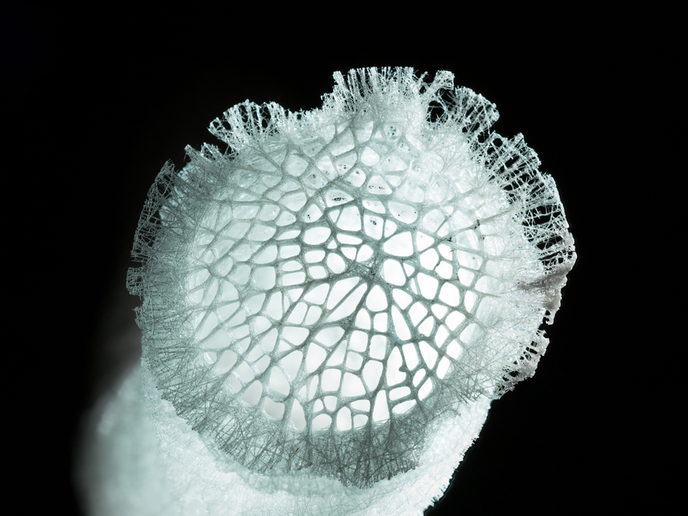Is a deep-sea sponge inspiring the design of future mechanical structures?
A glass sponge found in the deep waters of the Pacific Ocean is inspiring a new outlook on the design of buildings and other man-made structures. Since its discovery, the Euplectella aspergillum, or Venus’s flower basket, as the sponge is commonly called, has attracted scientific interest mainly because of its structure. It’s composed of a highly flexible, white, cylindrical lattice made of silica. An international research team supported in part by the EU-funded COPMAT project has now focused on a largely unexplored aspect of the deep-sea sponge – the hydrodynamic fields that surround and penetrate it. The team of researchers from Australia, Italy and the United States sought to find out if, besides improving its mechanical properties, the sponge’s skeletal motifs were also responsible for the optimised flow physics inside and beyond its body cavity. The results revealed a strong connection between the sponge’s structure and function, providing insight into how the lattice-like skeleton helps reduce overall hydrodynamic stress from the surrounding ocean. They also show how the skeleton is able to create a nutrient-rich vortex inside the sponge at low flow velocity. The study(opens in new window) has been published in the journal ‘Nature’.
Simulating the deep-sea sponge’s surrounding water flow
For their experiments, the team used the 21.6-petaflop supercomputer MARCONI100 installed at the high-performance computing centre of Cineca, Italy, and special software developed by Cineca Senior Technology Officer and study co-author Giorgio Amati. Aided by this computational arsenal, the researchers created the first-ever simulations of Venus’ flower basket and its response to and influence on surrounding water flow on the deep-sea floor where it lives. The simulations were based on the Lattice Boltzmann method used to simulate the dynamic behaviour of fluid flows. “By exploring the fluid flow within and outside the body cavity of the sponge, we uncovered the footprints of an expected adaptation to the environment,” explained study co-author Prof. Maurizio Porfiri of New York University in a news release(opens in new window) posted on the Istituto Italiano di Tecnologia website. “Not only does the sponge’s structure contribute to a reduced drag, but also it facilitates the creation on low-velocity swirls within the body cavity that are used for feeding and reproduction,” Prof. Porfiri added. According to study lead author Dr Giacomo Falcucci of Tor Vergata University of Rome and Harvard University, the team’s investigation “has a lot of implications for the design of high-rise buildings or, really, any mechanical structure, from skyscrapers to low-drag novel structures for ships, or fuselages of airplanes.” Dr Falcucci clarified his statement with some interesting examples: “Will there be less aerodynamic drag on high-rise buildings built with a similar latticework of ridges and holes? Will it optimize the distribution of forces applied? Addressing these very questions is a key objective of the team.” “This work is an exemplary application of discrete fluid dynamics in general and the Lattice Boltzmann method, in particular,” observed senior co-author Dr Sauro Succi of COPMAT project host Istituto Italiano di Tecnologia and Harvard University. “The accuracy of the method, combined with access to one of the top super computers in the world made it possible for us to perform levels of computation never attempted before, which shed light on the role of fluid flows in the adaption of living organisms in the abyss.” The 5.5-year COPMAT (Full-scale COmputational design of Porous mesoscale MATerials) project ends in 2023. For more information, please see: COPMAT project website(opens in new window)



